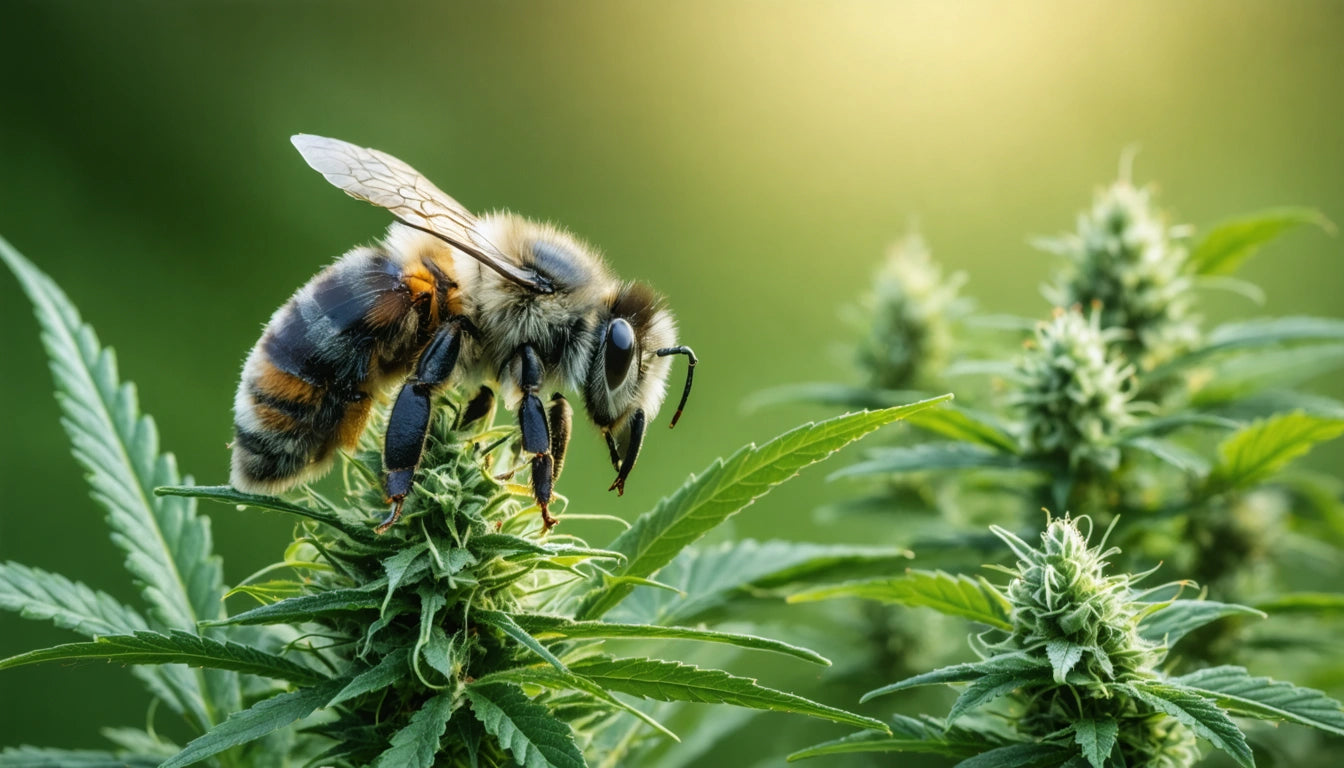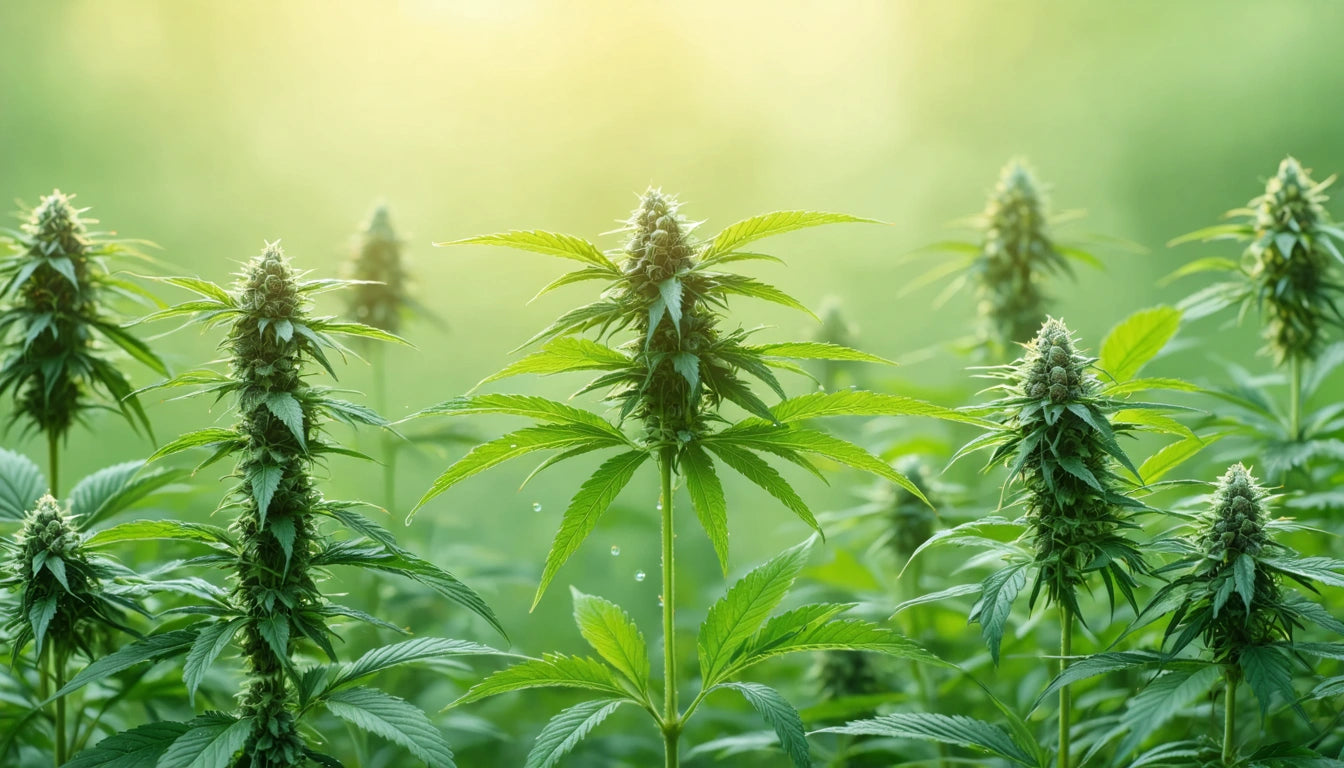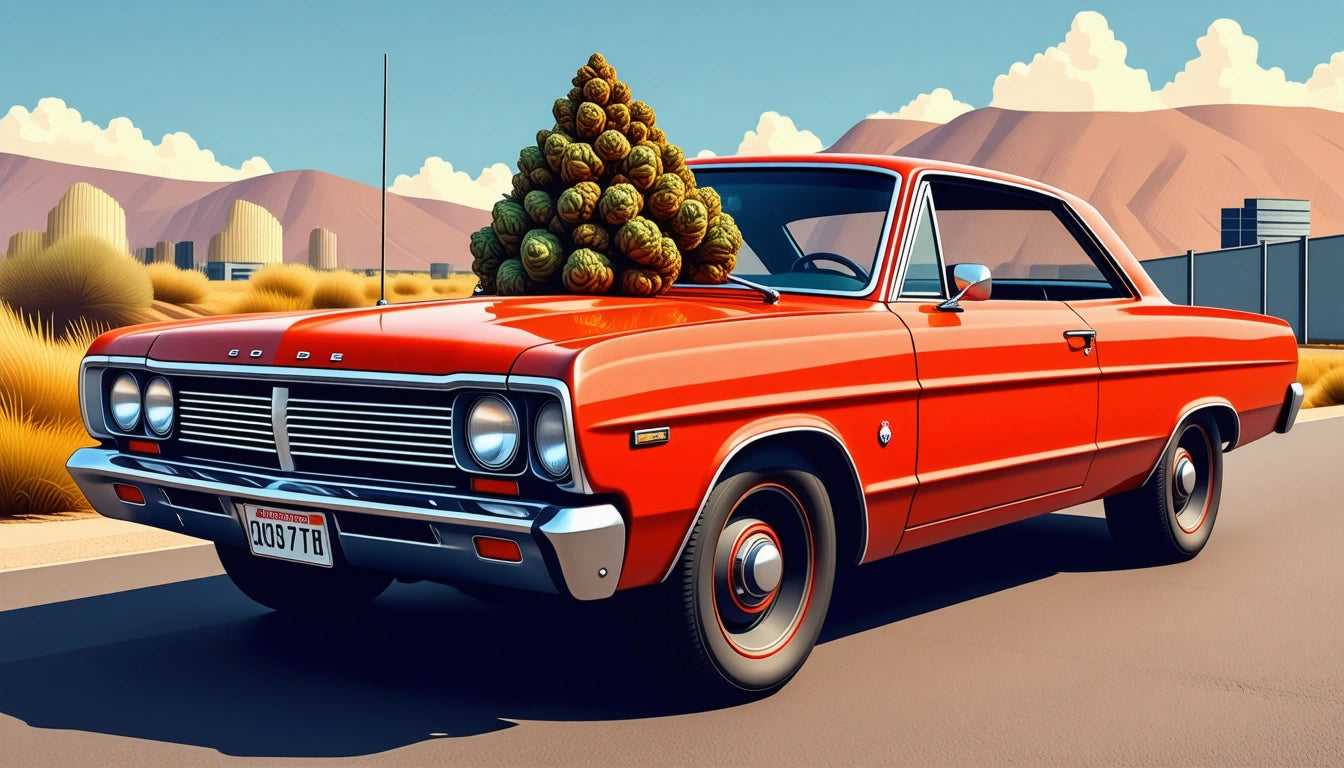Table of Contents
Do Bees Interact with Cannabis Plants?
The relationship between bees and cannabis plants raises fascinating questions about pollination, plant biology, and sustainable cultivation practices. As cannabis cultivation expands globally, understanding how these important pollinators interact with marijuana plants becomes increasingly relevant for both commercial growers and environmental considerations.
Cannabis Pollination Basics: Understanding the Process
Cannabis plants are primarily wind-pollinated, which distinguishes them from many flowering plants that rely on insect pollination. Male cannabis plants release pollen that travels through the air to fertilize female plants. This natural process is often carefully controlled or prevented entirely in commercial cannabis operations where seedless (sinsemilla) flowers are preferred for consumption.
The anatomy and growth patterns of cannabis flowers are specifically adapted for wind pollination. Female plants develop sticky resin glands that can capture airborne pollen, while male plants produce flowers with exposed stamens that easily release pollen into the air.
Bees and Cannabis: Examining the Relationship
Do Bees Pollinate Cannabis?
While cannabis is primarily wind-pollinated, research indicates that bees do visit cannabis plants. However, their role differs from their interaction with typical flowering plants. Cannabis flowers don't produce nectar, which is the primary attractant for bees in most plants. Instead, bees appear to collect pollen from male cannabis plants as a protein source.
A 2019 study published in Environmental Entomology found that cannabis plants can attract numerous bee species, particularly in late-season flowering when other pollen sources may be scarce. This suggests that while bees can pollinate cannabis, they aren't the plant's primary or evolutionary pollination method.
Are Bees Attracted to Weed?
Bees appear to be attracted to cannabis plants primarily for their pollen rather than for the plant's aromatic compounds or cannabinoids. Unlike some insects that are either attracted to or repelled by cannabis, bees seem to view cannabis pollen as simply another food source.
The strong aroma of cannabis, which comes from terpenes in the plant's resin glands, doesn't appear to be a significant attractant or deterrent for bees. This differs from other insects like aphids or spider mites that may be drawn to or repelled by specific chemical compounds in cannabis.
Research Findings on Bee Attraction to Cannabis
Scientific studies have begun to document bee visitation to cannabis plants. Researchers at Cornell University found that tall hemp plants (a variety of cannabis with minimal THC) can attract up to 17 different bee species. The height of the plants and the abundance of pollen appeared to be key factors in attracting bees.
Interestingly, the researchers noted that bees visiting cannabis didn't show signs of impairment or behavioral changes, suggesting that the cannabinoids in the pollen don't affect bees as they do humans. This makes sense evolutionarily, as many plant compounds that affect mammals don't have the same impact on insects.
Smoke Effects on Bees
Regarding the question "are bees attracted to weed smoke," the answer is a clear no. In fact, smoke of any kind is generally harmful and repellent to bees. Beekeepers have traditionally used smoke to calm bees during hive maintenance because it interferes with their chemical communication and induces a feeding response that distracts them. Cannabis smoke would likely have similar effects and would not attract bees.
Unlike some flying insects that might be attracted to smoke or burning materials, bees actively avoid smoke as it signals danger (forest fires) in their natural environment. This behavior is consistent with what we observe with other insects' responses to cannabis smoke.
Can Bees Make Honey from Cannabis Plants?
The question "can bees make honey from weed" requires clarification about how honey is produced. Bees make honey from flower nectar, not from pollen. Since cannabis plants don't produce nectar, bees cannot make honey directly from cannabis. Any "cannabis honey" on the market is typically infused with cannabis extracts after the honey is collected, rather than being produced naturally by bees visiting cannabis plants.
Some commercial operations have experimented with placing hives near cannabis fields or even "training" bees to collect from cannabis plants, but these efforts don't result in cannabinoid-rich honey through natural processes. For cannabis producers looking to diversify their product lines, specialized filling equipment for honey and other cannabis-infused products would be necessary to create such products artificially.
Cultivation Implications: Bees in Cannabis Growing Operations
For cannabis cultivators, the presence of bees can have both benefits and considerations. On the positive side, bees visiting a cannabis operation may indicate a healthy local ecosystem and can contribute to broader agricultural biodiversity. Some outdoor growers even welcome bees as part of their sustainable farming practices.
However, for producers focused on seedless flower production, bee visitation could potentially increase the risk of unwanted pollination if male plants are present. Most commercial operations carefully control their growing environments to prevent pollination, often growing only female plants or removing males early in the growing cycle.
Environmental Considerations
As bee populations face threats worldwide, cannabis farms could potentially provide additional pollen resources for bees, especially in late summer when the plants flower and other pollen sources may be declining. This could position cannabis cultivation as potentially beneficial for bee conservation efforts when grown outdoors and managed responsibly.
The distinctive aroma profile of cannabis plants doesn't appear to deter bees, allowing them to utilize the pollen resources even as the plants produce strong-smelling terpenes and cannabinoids.
Future Research and Sustainable Cannabis Cultivation
The relationship between bees and cannabis represents an emerging area of research with implications for both agriculture and ecology. As cannabis cultivation expands globally, understanding these interactions could help develop more sustainable growing practices that support rather than harm local pollinator populations.
For cannabis growers interested in environmental stewardship, creating bee-friendly cultivation practices might include maintaining diverse plantings around cannabis fields, avoiding harmful pesticides, and potentially even timing cultivation to provide pollen resources when other sources are scarce.
While cannabis may not have evolved specifically to attract bees, their interaction represents an interesting ecological adaptation where both species can potentially benefit in the modern agricultural landscape. As research continues, we may discover more about how these important pollinators interact with one of humanity's oldest cultivated plants.











Leave a comment
All comments are moderated before being published.
This site is protected by hCaptcha and the hCaptcha Privacy Policy and Terms of Service apply.